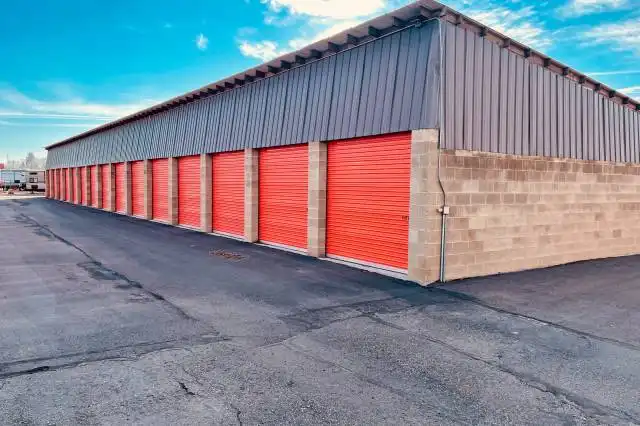Start a Water Refilling Business
Quenching the World's Thirst: A Profitable Venture into Water Refilling
| Updated


WATER REFILLING BUSINESS
Tap into the essential life elixir with a Water Refilling Business! Exercise your entrepreneurial muscles by quenching the thirst of the masses, and believe you me, the demand is endless. This fascinating venture not only hydrates the world but flushes profits into your pocket, all while contributing to public health. In a nutshell, the business model revolves around purifying raw water through sophisticated technology and delivering the refined product to households, offices, or commercial outlets.
Jump to Business Plan
RELATED BUSINESS IDEAS
Browse ALL Rental & Delivery Services Business Ideas
Discover Your Perfect Domain
Unlock the door to your online success with our hand-picked selection of premium domain names. Whether you're starting a new venture or rebranding an existing one, the right domain can set the tone for your digital presence. Browse through our curated list, each with its unique potential to enhance your brand's visibility and credibility.
WATER REFILLING MINI BUSINESS PLAN
This a quick reality check to help you identify the strengths and weaknesses of your business concept before you dive in.
Expected Percent Margin:
- Gross Margin: 50-60%
- Net Profit Margin: 20-30%
Earnings Expectations:
- Daily Earnings: $100 - $200
- Weekly Earnings: $700 - $1,400
- Monthly Earnings: $3,000 - $6,000
- Annual Earnings: $36,000 - $72,000
Actions to Hit Those Numbers:
Equipment and Installation:
- Initial Investment: Approximately $20,000-$50,000 for water refilling station infrastructure.
- Maintenance: Regular checks and maintenance of filtration systems.
Marketing and Customer Acquisition:
- Community Engagement: Partner with local community events, schools, and gyms.
- Direct Marketing: Door-to-door leaflet distribution and word-of-mouth referrals.
Supply and Delivery:
- Staffing: Hire 2-4 employees for operation and delivery service.
- Delivery Service: Offer flexible home delivery options.
Cost Control:
- Rent or Purchase: Consider buying a small property than renting ones, if financials allow.
- Utilities: Electricity and water bills shouldn’t exceed more than 10% of your total margin.
Business Operations:
- Open Hours: Operate at least 6 days a week, 10-12 hours a day to accommodate various customer schedules.
- Transaction Volume: Aim to sell at least 50-100 5-gallon jugs per day.
Again, these are estimations and can vastly differ based on your location, investments and management strategies. Always get personalized expert advice before embarking on a new business venture.
NOT WHAT YOU HAD IN MIND? Here are more ideas



Browse ALL Rental & Delivery Services Business Ideas
Grab Your Business Website Name
Before you get caught up in the whirlwind of setting up your business, invest in a domain name. It's a small but significant step that lays the foundation for your brand and makes it easier for customers to find and trust you. Just like you wouldn't build a house without securing the land first, don't build a business without securing your domain name.
"Why? Can't that wait?" Here's why it shouldn't
Step 1: Determine if a Water Refilling Business is Right for You
Breakdown of Startup Expenses
When starting a water refilling business, it is important to understand the startup costs associated with the venture. These expenses can include the cost of the equipment, such as the water tanks, pumps, and filtration systems. Additionally, there may be costs associated with obtaining the necessary permits and licenses, as well as the cost of advertising and marketing. It is important to understand all of the costs associated with starting a water refilling business before making the decision to move forward.
Breakdown of Ongoing Expenses
In addition to the startup costs, it is important to understand the ongoing expenses associated with a water refilling business. These expenses can include the cost of the water itself, as well as the cost of maintenance and repairs for the equipment. Additionally, there may be costs associated with advertising and marketing, as well as the cost of labor for employees. It is important to understand all of the costs associated with running a water refilling business before making the decision to move forward.
Examples of Ways to Make Money
When starting a water refilling business, it is important to understand the different ways to make money. One way to make money is to charge customers for the water they purchase. Additionally, it is possible to make money by offering additional services, such as water delivery or installation services. Finally, it is possible to make money by selling additional products, such as water filters or water softeners. It is important to understand all of the different ways to make money before making the decision to move forward.
Step 2: Name Your Water Refilling Business
Name
Step 2: Name Your Water Refilling Business
Tips on Choosing a Name
Choosing the right name for your business is an important step in the process of starting a water refilling business. It should be something that reflects the services you offer and is easy to remember. Consider using words that evoke a feeling of cleanliness, such as “Pure” or “Crystal”. You may also want to consider using your own name or a combination of words that describe your business. Additionally, make sure the name you choose is not already taken by another business, as this could lead to legal issues down the road.
Tips on Registering Your Business Name
Once you have chosen a name for your business, you will need to register it with the appropriate government agency. This will ensure that your business name is legally protected and that no one else can use it. Depending on the type of business you are starting, you may need to register with the state, county, or city. Additionally, you may need to register with the IRS and obtain an Employer Identification Number (EIN). This will allow you to open a business bank account and apply for business loans and other financing. Finally, you may need to register your business name with the U.S. Patent and Trademark Office to ensure that your business name is legally protected.
Step 3: Obtain the Necessary Licenses and Permits
Research Local and State Regulations
Before obtaining the necessary licenses and permits, it is important to research the local and state regulations that apply to water refilling businesses. This includes researching the type of license and permits that are necessary to legally operate the business. Additionally, it is important to research any zoning laws that may apply to the business. It is also important to research any health and safety regulations that may apply to the business.
Obtain Necessary Licenses and Permits
Once the necessary research has been completed, the next step is to obtain the necessary licenses and permits. This includes obtaining a business license, a water refilling license, and any other permits that may be required. Depending on the state and local regulations, the process for obtaining the necessary licenses and permits may vary. Additionally, it is important to ensure that all licenses and permits are kept up to date and renewed as necessary.
Step 4: Secure Financing
Explore Financing Options
Before you can start a water refilling business, you need to secure financing. Financing options can include personal savings, business loans, and grants. It is important to research all of your options to determine which one is best for your business. Additionally, you should consider the costs associated with each option. For example, a business loan may have a lower interest rate than a personal loan, but it may also require collateral.
Create a Business Plan
Once you have explored your financing options, it is time to create a business plan. A business plan should include a detailed description of your business, including your goals, objectives, and strategies. It should also include a financial plan, which should include a breakdown of startup costs, ongoing expenses, and potential sources of income. Additionally, a business plan should include a marketing plan, which should include a description of your target market and how you plan to reach them. Finally, a business plan should include a risk management plan, which should include strategies for mitigating potential risks.
Step 5: Find a Location
Considerations for Choosing a Location
When choosing a location for your water refilling business, there are several factors to consider. First and foremost, you need to make sure that the location is accessible to your target market. It should be in an area where there is a high demand for water refilling services. Additionally, you should consider the cost of renting or buying the space, as well as the cost of utilities, insurance, and other fees associated with the location.
Leasing vs. Buying a Location
When it comes to finding a location for your water refilling business, you have the option of either leasing or buying a space. Leasing a space may be the more cost-effective option, as it will allow you to avoid the upfront costs associated with buying a space. However, if you plan to stay in the same location for a long time, buying a space may be the better option. Additionally, when leasing a space, you should make sure that the lease agreement allows you to make any necessary changes to the space in order to accommodate your business.
Step 6: Purchase Equipment
Types of Equipment Needed
When starting a water refilling business, there are a few pieces of equipment that are necessary. The most important piece of equipment is a water filtration system. This system will be used to filter out any contaminants from the water, making it safe for drinking. Additionally, you will need to purchase a storage tank, a delivery truck, and a water dispenser. Depending on the size of your business, you may also need to purchase additional equipment such as a water cooler, a water vending machine, and a water softener.
Where to Buy Equipment
When it comes to purchasing equipment for your water refilling business, there are a few different options. You can purchase the equipment from a local supplier, or you can purchase it online from a variety of different vendors. Additionally, you can purchase used equipment from other businesses that are no longer in operation. When purchasing used equipment, it is important to make sure that it is in good working condition and that it meets all safety standards. Additionally, you should also make sure that the equipment is compatible with your filtration system.
Step 7: Market Your Business
Developing a marketing plan is essential to the success of any business, and a water refilling business is no exception. A marketing plan should include a detailed strategy for how to reach potential customers, as well as a budget for advertising and promotion. It should also include a timeline for when each marketing activity should be completed.
Examples of marketing strategies for a water refilling business include creating a website, using social media, creating promotional materials such as flyers and brochures, and advertising in local newspapers and radio stations. Additionally, attending local events and networking with other businesses in the area can be a great way to spread the word about your business.
When creating a marketing plan, it is important to consider the target audience for the business. This will help to determine which marketing strategies will be most effective. Additionally, it is important to consider the budget for marketing and promotion, as this will determine which strategies are feasible.
Finally, it is important to track the success of the marketing plan. This can be done by tracking the number of customers that are reached through each strategy, as well as the number of sales that are made as a result of the marketing activities. This will help to determine which strategies are most effective and should be continued, as well as which strategies should be adjusted or discontinued.
Step 8: Hire Employees
Considerations for Hiring Employees
When starting a water refilling business, it is important to consider the type of employees you need to hire. Depending on the size of the business, you may need to hire a few employees to help with the day-to-day operations. You should consider the skills and experience of each potential employee, as well as their availability and cost. Additionally, you should consider the legal requirements for hiring employees, such as taxes, insurance, and other paperwork.
Tips for Retaining Employees
Once you have hired the right employees, it is important to keep them motivated and engaged. This can be done by offering competitive salaries, benefits, and bonuses. You should also ensure that the work environment is comfortable and safe, and that employees have the necessary tools and resources to do their job. Additionally, you should provide employees with opportunities for professional development and growth. Finally, you should ensure that employees are recognized for their hard work and contributions to the business.
Step 9: Monitor Your Business
Creating a system for tracking performance is essential for any business, and it is especially important for a water refilling business. A good system should include tracking sales, customer satisfaction, and expenses. This will help you identify areas where you can improve and make adjustments to ensure your business is running as efficiently as possible.
When it comes to tracking performance, there are a few tips you should keep in mind. First, make sure you are tracking the right metrics. This will help you identify areas of improvement and make sure you are focusing on the right areas. Second, make sure you are tracking your performance on a regular basis. This will help you identify any changes or trends that may be occurring in your business. Finally, make sure you are using the data you collect to make informed decisions. This will help you make the best decisions for your business and ensure that you are maximizing your profits.
In addition to tracking performance, you should also monitor your customer satisfaction. This can be done by collecting feedback from customers and using it to make improvements to your business. You should also track customer complaints and use this information to identify areas of improvement. Finally, you should also track customer loyalty and use this information to create loyalty programs and incentives that will help you retain customers.
By monitoring your business performance and customer satisfaction, you will be able to identify areas of improvement and make the necessary adjustments to ensure your business is running as efficiently as possible. This will help you maximize your profits and ensure your business is successful.
EXPLORE MORE CATEGORIES
Browse ALL Business Idea Categories
TAKE THE NEXT STEPS










